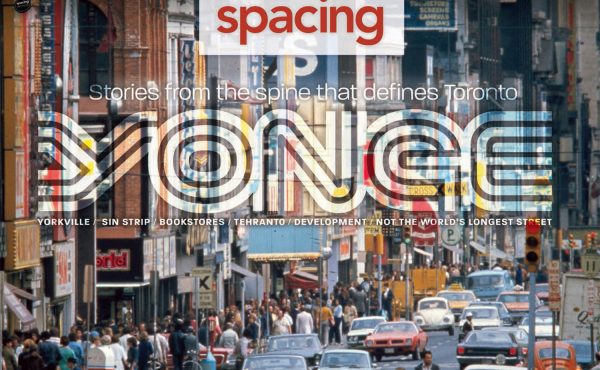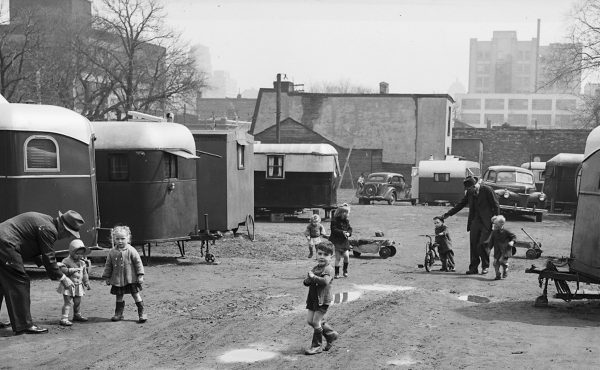Later this fall, city council will receive the first of what will likely be a long series of planning reports responding to a July motion (MM9.36) moved by mayor John Tory and housing czar Ana Bailao that asked for ideas on spurring missing middle-type housing and intensifying the Yellowbelt — the 70% of Toronto where only single detached homes are currently allowed.
The motion came as something of a surprise, given how central Toronto’s neighbourhoods are to council and mayoral politics. And it raises the stakes on the question of whether council is truly prepared to demand that Toronto’s neighbourhoods provide more housing as a means of easing the city’s supply crunch and therefore prices/rents.
The “how,” as Tory’s officials and the planning staff well know, will be both complicated and contentious. After all, the Official Plan has long been premised on what’s called a “grand bargain”: that almost all intensification will be directed to the Avenues and transitioning industrial areas while “stable” neighbourhoods get to stay as they are, unless, of course, homeowners are looking to knock down smaller houses and replace them with giant ones.
There has been some movement on the housing file lately: new rules for secondary suites and rental laneway houses. The City secured over $1 billion in federal funding to repair thousands of Toronto Community Housing apartments, and, last winter, launched Housing Now, an ambitious plan to build 11,000 new apartments, including 3,700 affordable ones, on 11 parcels of city land. But these changes have been undermined by a recent official plan amendment, known as OPA 320, that has sought to flash freeze residential neighbourhoods using dubious regulations that attempt to define “character.”
Tory’s bid to re-write the OP rules governing neighbourhoods also coincides with major changes in planning policy from the provincial Tories, with even more reforms said to be in the pipeline. The Ontario Municipal Board is back from the dead. Municipalities now have new tools to force intensification around transit stops. And the Ford government’s consolidation of community benefits charges means the era of Section 37/let’s-make-a-deal development applications has come to a close.
In a far-ranging interview with Spacing last week, Tory discussed his housing goals, the politics of neighbourhood planning reform, and his intention to make more strategic use of publicly owned land as a means of tackling Toronto’s affordability crisis. (The interview has been edited and condensed.)
Q: Why now? What is the reason for going ahead with this reform at this moment?
JT: In times of rapid change, you start to run out of options as to the things you can do. [During the election], I set a target of 40,000 [new housing units in ten years] because I wanted to be ambitious. But that was not going to happen unless you made some changes to the status quo.
We boil [housing] down to two stark choices: the 40-storey skyscraper or low-rise, single-family detached houses. There was absolutely nothing in between. [In] large swaths of the city, the prohibition against any kind of gentle way to increase density [means] if you really want to make great progress, you simply had to change the status quo.
I’m very seized by the passage of time. When we sit in these meetings on Housing Now, and [city officials] present me with the timetable, you’re talking about occupancies into 2022, 2023. We better get on with this.
People can be critical of my leadership style, and that’s fair game. The main criticism is, this guy doesn’t move fast enough. I recognize that if you want to get the support you need at the city council on these sensitive matters, you have to keep moving forward, but at a pace that makes sure you don’t leave the majority of council sitting behind you.
[In] a speech I made at BILD in March, I said I was prepared to invest some political capital on housing and transit-oriented development. To me, it’s all part of the same file. You have to start to change the public’s opinion and broaden their understanding of the challenges we face if we’re going to be a home for people from all walks of life. It isn’t just the missing middle. The status quo is also the reluctance on the part of people who live near transit stops to accept that that is the logical place for some densification.
For the vast majority of people, housing and affordable housing was the single biggest issue in the election. It was big among young people who were having trouble finding it. It was big among their parents who were concerned their kids couldn’t find housing. Despite that consensus, you have a wide disparity of views. My job is to engage the public in a more open discussion. You just can’t exclude 70% of the city [zoned for detached residential]. It’s just not a viable option anymore.
Q: Let’s talk about NIMBYism. The politics of this city and this institution is built on the stability of a lot of great neighbourhoods. But that stability comes from not much changing, except owners building bigger houses. So what you’re saying with this move is, I’m not just going to step on the third rail of local politics; I’m going to dance on the third rail for a while. Councillors all know there’s a knee jerk reaction to oppose anything different, even modest mid-rise buildings on main streets. So how do you change that mindset?
JT: I believe, first, the core values of Torontonians strongly support the notion that we should not be excluding people just because [they] can’t afford to live here. Second, if they don’t accept the so-called moral case, then they would accept the business case, that we need to have a place for people to live who perform all kinds of different roles in Toronto’s economy. There are people in lower-income jobs who are really important to the functioning of the economy. There are people in higher paid jobs. There has to be a place for everybody, including those in between.
Q: There are duplexes, triplexes and mid-rise apartment buildings are all over the place, but with each next development, it’s like the sky is going to fall…
JT: Maybe you need to take [residents] and show them. I [also] think the development industry has to be more creative. Somehow it’s become a choice between a skyscraper or nothing. I look at places like the Danforth and say, there’s lots of opportunity to do stuff that is creative here.
In those neighbourhoods [where] people argue that any concept of a duplex or a triplex would be an outrageous alteration to the character of that neighbourhood, they don’t realize some of these large residences for many years were homes with three flats. Everybody was peaceful and happy and nobody really knows the difference.
Q: Let me ask you about the political management of this reform. There are dense layers of regulation, some approved quite recently, which militate against this whole idea. How do you begin to undo that? How do you moving aside some of that regulatory burden?
JT: The professional planners have to help us with the mechanics. Then we have to apply what I call the small-p political lens, which is the art of the possible in terms of how many changes you can make and still sustain the public’s confidence. There are 25 members of council who have something to say on this, and there are three million people who live here. But I have some political capital to invest. We can’t go on the way we’re going.
There are a lot of people in the city right now who are very uneasy about all of these condominium towers. They’re saying, `Where does that all end?’ I don’t know if there’s an answer but you [have to] say to them, `look, you better have some other answer if you don’t like a diet that consists entirely of high-rise towers.’ I think people are ready for that discussion. We’re going to have to go about it in an orderly way. [And] we’re counting on the planning department to come back with [recommendations]. Maybe they’re the very best people to do it because they put those dense layers of regulation in place.
We can’t get into stark choices. I like the expression that it’s a `gentle’ way to densify in all different parts of the city. I see no reason whatsoever why [gentle density] needs to affect the character of the neighbourhoods at all. This is a false choice: Either you leave it the same, which protects the character, or you change it, which ruins the character. I don’t think that’s the choice. Find ways to achieve the densification that protects the character of the neighbourhood. It’s entirely possible. The challenge is to find the regulatory ways and then the political means to sell that, starting with the councillors.
Q: When you talk to councillors and members of the public, what is your `or else?’ If we don’t fix the housing crisis, what happens to the city?
JT: The city will fail to live up to its own value of being a city that includes people from all different income groups. We really want to be a city where everyone can find a home here. And I don’t mean just a home for the sake of calling it that, but a home we’re satisfied with in terms of its reasonable quality and affordability, within the city. Secondly, I think you put the city’s economy at risk. Some people will say, `That’s okay, we really can’t afford to grow any more.’ I utterly reject that. The city has to continue to grow because that rising tide is going to life all boats.
I tell people to do the math on a single person, with a good, solid secure job earning say $55,000 a year. How easy is it for those people to find a place to live in the City of Toronto? If there’s an adequate supply of housing for people like that, then they’re going to free up some more housing for some other people. We have a separate challenge with developing affordable housing and restoring the social housing stock.
Q: There are cities in the U.S. and Europe where municipal governments have ripped the band aid off, up-zoning all single-family residential neighbourhoods. Minneapolis, Seattle, etc. These changes were mayor led. What is your thought about that approach?
JT: Do I think we have to rip the band aid off here? My leadership style is relevant to this. I am prepared to see us take some bold steps and will rely on the professional planners. We’ve told them, don’t tell us that good planning is entirely the preservation of the status quo. We asked [them] how can we increase the availability of housing in the 70% of the city that presently has very strict restrictions.
The best way to deal with [reform] is to present people with options. It’s not about studies. I think pilot projects are okay, but we’re looking at changes that are broader and faster. The way in which we’ll demonstrate that the initial by-products of the changes we’ve made are not harmful is by seeing them happen, and by pointing out to people that they’ve already happened in other parts of the city [and] things are fine there.
If [the planning staff] says the only way to do this is with a ripping off the band-aid approach, I’ll talk to them about the report at that time. But I’ll also say that is generally not the way you bring a hesitant public along. You bring them along by showing them there’s a way to bring about change that’s not painful or scary, but is actually quite sensible.
Q: How should we use public land for housing in ways that are different than has been done in recent years, which is to sell property and use the proceeds to pay down debt?
JT: My approach is very different. The key thing is to keep as much [public land] as possible. What better use could you make of public resources than to own strategically located land that you might have some purpose for, if not today than five years from today?
Also, we have not had a coordinated approach. [The City of Toronto] was the first to put up public land [for housing]. In my first term, we put up pieces of land, some of which had been lying fallow for 10 or 12 years. We’ve got housing developments now that people are moving into today that resulted from that.
The next step I took was to urge the federal and provincial governments to do what we have done. We’ve had very mixed success. I do know the federal government did an inventory [of federal land in Toronto], and put up exactly zero pieces of land, so far.
What I’d like to take forward now is a coordinated [approach]. If you take all the land owned by the federal government, by the province and by us, you have a formidable series of real estate options. Why wouldn’t you sit down and say, how can we coordinate the use of that land? Right now, very little of that discussion takes place.
Q: Can you make a compelling economic case for holding on to that publicly owned land?
JT: Pay now or pay later. If you assume we must deal with the challenge of affordable housing, to keep cities healthy, there are only two ways to do it: one is through cash, which everybody is short of. But if you put land up, you’re not only going to get what I consider to be a desirable use of that land, but [also] a reduction in the cash required. It’s something these governments should be very interested in doing. In most cases, you maintain ownership of the asset. It’s a very compelling argument.





4 comments
Intensifying around subway stations is reinforcing the “ghetto” model of planning; creating separate zones for living, shopping, working. This model is heavily reliant on cars and transit to get between them.
In contrast, is the Complete Communities model which includes all three in a walkable zone; thus lowering the reliance on cars, and even transit.
So the 770 Vic. Pk. development might not be the best use of the property, as long as there are options for affordable housing elsewhere in the area.
Strangely, there is a massive swath of property next to the railroad tracks which could surely support a mixed development such as the St. Lawrence Community.
The real conflict here seems to be between keeping cars in the mix vs walkable communities.
And in direct response to the Mayor; if you want “gentle” development, you need to stop the flurry of 30-storey condos dropping into the Danforth Village. If we are to have any hope of creating “gentle” development, the gold rush for developers needs to end today.
Mr. Mayor, you need to cancel some permits and rethink the plan. (A good start would be the expansion of Main Square.)
Gerry, not to get too semantic, but I think you may be misinformed on what transit oriented development entails. Since the concept was coined by Peter Calthorpe, it has fundamentally been characterized by a mixture of uses and complete communities – not the single use/ Euclidean zoning you refer to as ‘ghetto planning’. What TOD promotes is higher density and mixture of uses surrounding higher order transit.
Ian, I would love to hear about higher order transit. And “Ghetto” is not an accurate description, but I couldn’t find anything remotely close, except for Islands; which, with some thought, probably works better anyways.